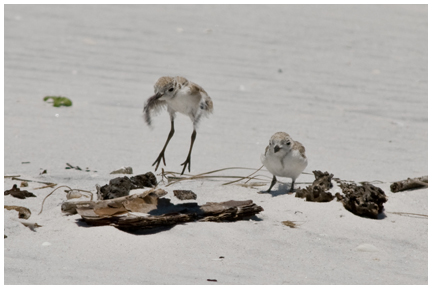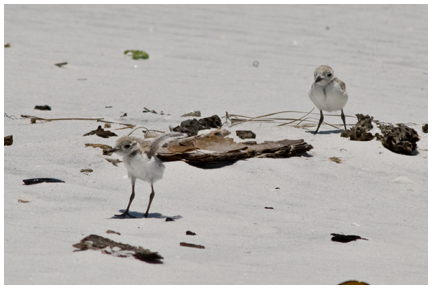
June and July is nesting season
for threatened shore birds

Grayton Beach State Park is hosting two least tern nests and one snowy plover nest this late spring. Deer Lake State Park has four least terns and two snowy plover nests.
Please be careful as you walk along these State Park beaches as the young fledglings will be learning to fly and have little cover from predators or human traffic.
About snowy plovers
• The Snowy Plover frequently raises two broods a year, and sometimes three in places where the breeding season is long. The female deserts her mate and brood about the time the chicks hatch and initiates a new breeding attempt with a different male.
• Young Snowy Plovers leave their nest within three hours of hatching. They flatten themselves on the ground when a parent signals the approach of people or potential predators. They walk, run, and swim well and forage unassisted by parents, but require periodic brooding for many days after hatching.
About least terns
• The Least Tern prefers sandy beaches for nesting, but it will use a flat gravel roof of a building. On sunny days the hot tar showing through the gravel can burn the feet of chicks or become stuck in their down.
• Although widespread and common in places, the Least Tern’s favored nesting habitat is prized for human recreation, residential development, and alteration by water diversion, which interfere with successful nesting in many areas. Interior population federally listed as endangered in 1985.
